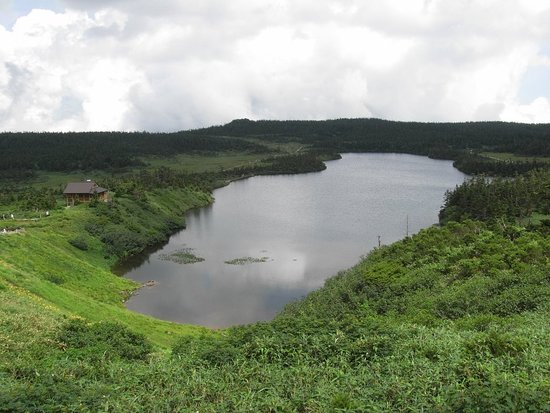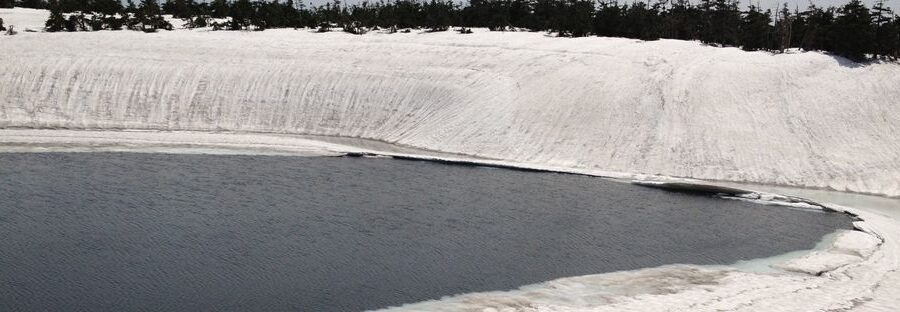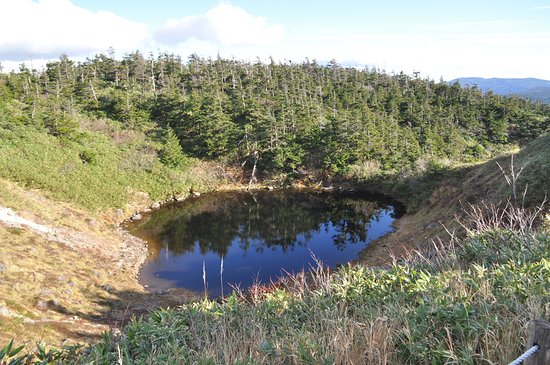Hachimannuma Pond and the Hachimantai Summit
The Hachimantai highland has a plateau-like summit at 1,613 meters above sea level that is home to tranquil ponds, expansive wetlands, and vast forests of Maries’ fir. The largest of the ponds, and a symbol of the area, is Hachimannuma Pond.
This crater lake, formed approximately 7,300 years ago, has a circumference of roughly 1.5 kilometers. An encircling boardwalk trail provides access to the surrounding wetlands, which are brightened by blooming Amur daylilies, avens, watasuge cottongrass and other alpine plants from midsummer through early fall.
Nearby Kagaminuma Pond is nicknamed “Hachimantai Dragon Eye” because of a natural phenomenon that occurs in late spring. As the edges of the pond thaw, opening a ring of water, the center of the remaining ice also begins to melt. When seen from above, the pond resembles a giant eye. While beautiful, the pond can be dangerous while it thaws, so visitors should keep away from the edge.
Mikaeri Pass is located at the border between Akita and Iwate prefectures. The pass offers panoramic views of Hachimantai and its ponds and wetlands to the east, as well as Mt. Iwate, Mt. Hayachine, Mt. Akita-Komagatake, and other mountains to the south. Visitors can also take advantage of the Hachimantai Mountain top Rest House and parking at the pass.



Hachimannuma Pond and the Hachimantai Summit
The Hachimantai highland has a plateau-like summit at 1,613 meters above sea level that is home to tranquil ponds, expansive wetlands, and vast forests of Maries’ fir. The largest of the ponds, and a symbol of the area, is Hachimannuma Pond.
This crater lake, formed approximately 7,300 years ago, has a circumference of roughly 1.5 kilometers. An encircling boardwalk trail provides access to the surrounding wetlands, which are brightened by blooming Amur daylilies, avens, watasuge cottongrass and other alpine plants from midsummer through early fall.
Nearby Kagaminuma Pond is nicknamed “Hachimantai Dragon Eye” because of a natural phenomenon that occurs in late spring. As the edges of the pond thaw, opening a ring of water, the center of the remaining ice also begins to melt. When seen from above, the pond resembles a giant eye. While beautiful, the pond can be dangerous while it thaws, so visitors should keep away from the edge.
Mikaeri Pass is located at the border between Akita and Iwate prefectures. The pass offers panoramic views of Hachimantai and its ponds and wetlands to the east, as well as Mt. Iwate, Mt. Hayachine, Mt. Akita-Komagatake, and other mountains to the south. Visitors can also take advantage of the Hachimantai Mountain top Rest House and parking at the pass.

